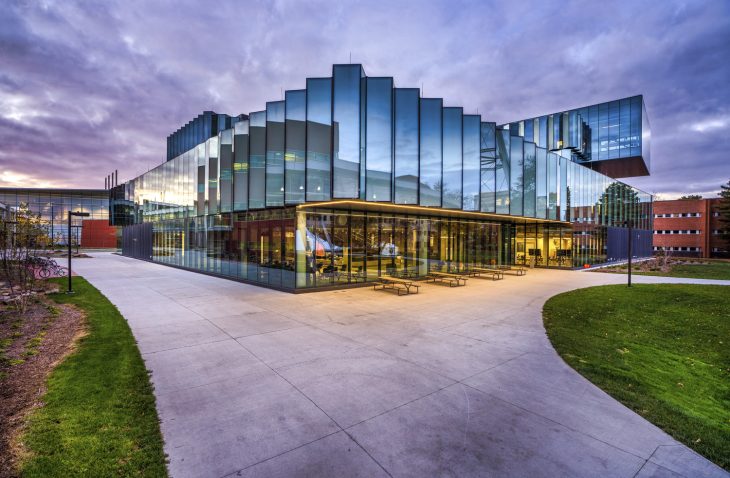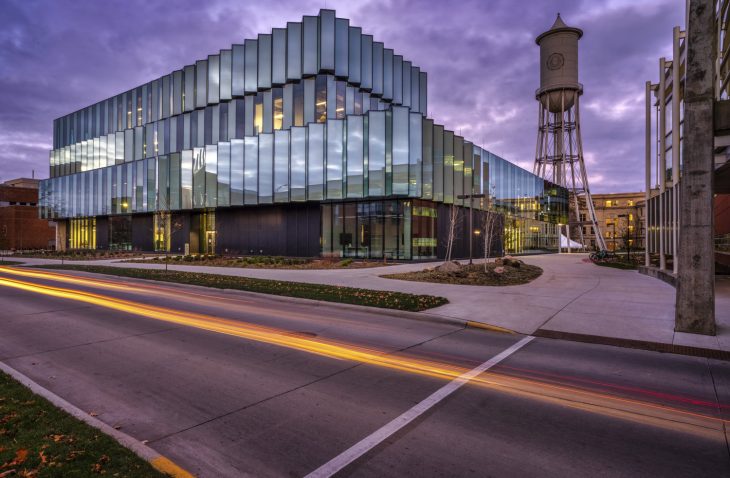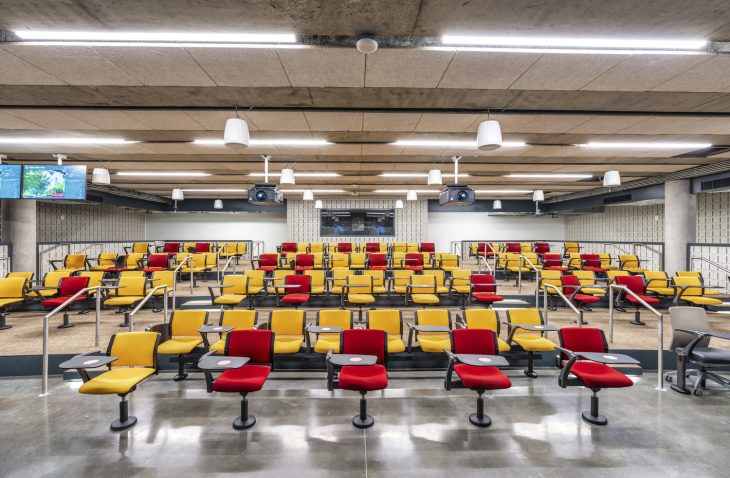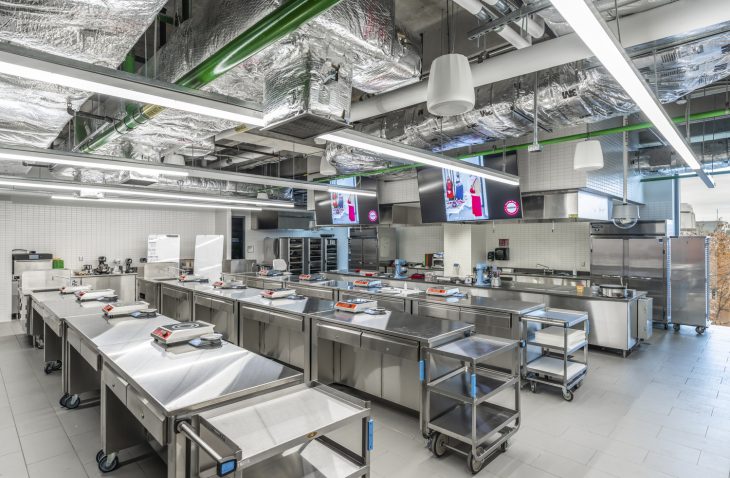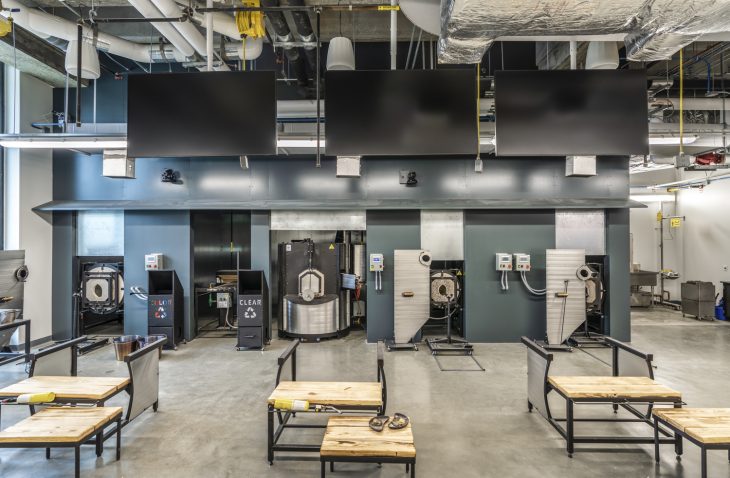LEED Gold Student Innovation Center
The project: The new, $60-million Student Innovation Center at Iowa State University is a multidisciplinary hub for students in the College of Engineering and College of Design. The 146,323-sf, student-centric building houses no faculty offices, only student-centric spaces. The center features fabrication areas for electronics, woodworking and textiles, metal working and engine test bays, as well as a test kitchen and a store selling products the students make.
The goal: Further the university’s mission to be a hands-on institution through the creation of various spaces for students to collaborate and experiment.
Project approach: IMEG worked closely with the university to determine the needs of each of the building’s student groups since multiple disciplines use the new facility, with some areas designated as shared spaces and others dedicated for a particular discipline. The design included a large amount of equipment needed to support the metal, wood, plastic, and electronics fabrication areas, and for engine testing.
Challenge: The lower level and main floor house spaces that require continuous one-through ventilation to maintain air quality and meet ventilation code requirements. Solution: The primary air handling system for these spaces is comprised of a 100% outside air supply unit coupled with a matching exhaust air handling unit. A pumped glycol loop couples the supply and exhaust air handling units to recover energy to pre-condition the outside air supply and minimize peak heating/cooling loads and overall energy use. This same glycol loop is routed through the gaffer’s guild exhaust system to recover waste heat from the furnaces for additional heat energy recovery in the winter and to provide reheat to the once-through air supply system during the summer.
Challenge: The upper three levels house classrooms, conference rooms, offices, and electronics labs that do not require once-through ventilation exhaust. Solution: These levels are served by an underfloor air distribution (UFAD) system coupled with perimeter radiant heating and a dual wheel energy recovery dedicated outside air supply (DOAS) unit. The DOAS supply is ducted independently from the UFAD system into each occupied space so the UFAD system fans can be turned off when there is no cooling load, saving significant fan energy.
The outcome: The SIC serves the entire university community by supporting project-based learning and creativity by increasing access to resources for all students. It’s sustainable features—including daylight harvesting, lighting design with daylight dimming and occupancy control, and preparation for a rooftop photovoltaic system—and innovative design helped the project achieve LEED Gold certification and win numerous industry awards.
Check out the project highlight video.








